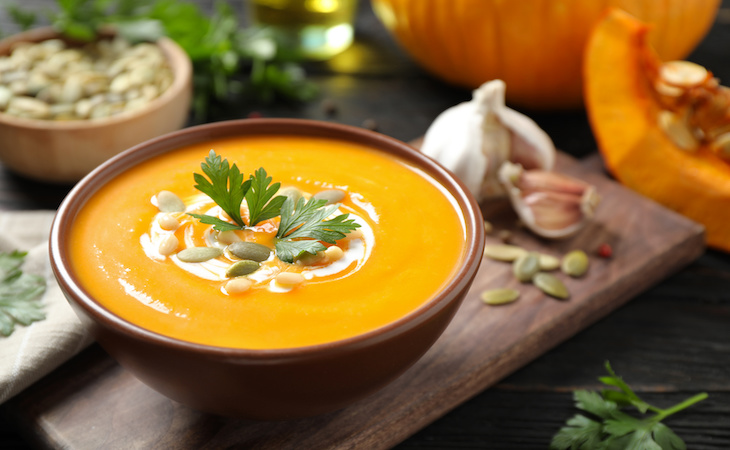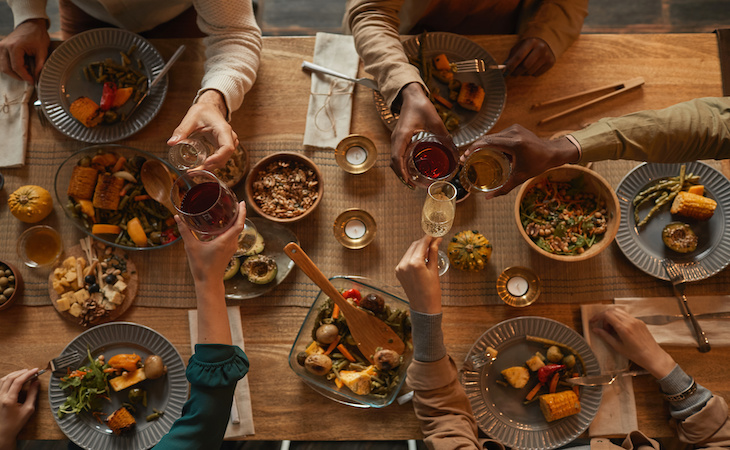
Healthy holiday meals support better sleep by reducing heavy foods, excess sugar, and alcohol. Nutrition experts recommend eating protein-rich, fiber-filled, and magnesium-rich foods to stabilize blood sugar and aid relaxation. Lighter recipe swaps include veggie soups, kale salad, roasted pumpkin seeds, lean proteins, and modified classics like mac and cheese.
Holiday meals, just like the holidays, only come around once a year—and that means many people want to enjoy each and every bite. Whether it’s a savory dish or a sweet treat, holiday recipes can be nostalgic and bring happiness as well as create new memories shared with family and friends.
Unfortunately, heavy holiday meals can leave many people feeling fatigued. Some heavy holiday dishes and meals may even make it harder to fall asleep. Feeling too full or having an upset stomach can keep you up late well after the holiday feasts have ended.
Instead of sacrificing sleep for some good holiday eats and treats, consider baking and cooking up some healthy holiday recipes. Ahead, we have healthy holiday recipes for Thanksgiving, healthy holiday cookie recipes, and more for all of those end-of-the-year festivities—straight from registered dietitians.
Benefits of healthy eating during the holidays
Why should you swap out traditional holiday recipes for healthy holiday recipes? There are many reasons, but one for certain is your holiday sleep.
“The holidays are often full of big meals that go late into the evening,” shares Morgan Goodstadt, RD, founder of Good Nutrition RD. “Eating a big meal right before bed can impact sleep quality because it will keep your heart rate elevated for longer and disrupt your sleep stages. It may even lead to nighttime wake-ups or feeling poorly rested in the morning.” (To avoid this, Goodstadt recommends eating your last meal two to three hours before bedtime).
Besides larger holiday meals, you probably consume more sweets around the holiday season, which can also negatively impact your sleep.
“Eating sweets before bed can create a spike in blood sugar before bed and a possible overnight crash,” says Goodstadt. “This may make it harder to fall asleep or cause middle-of-the-night wake-ups.”
On the flipside, eating protein-rich foods (like Thanksgiving turkey) before bed may actually improve sleep quality by stabilizing blood sugar and providing amino acids like tryptophan that support melatonin production, she explains.
When planning healthy holiday recipes, Goodstadt recommends choosing nutrient-dense foods containing protein, fiber, and healthy fats to support sleep by helping stabilize blood sugar levels before bed.
“While it is totally fine to enjoy some of the seasonal treats during the holidays, it is important to also incorporate lots of healthy seasonal produce and dishes to support sleep,” she says. Think of foods like vegetables.
“A 2025 study published in the Journal of the National Sleep Foundation found an association with better sleep and greater intake of fruits and vegetables,” shares Sheri Gaw, RDN, owner of Sheri The Plant Strong Dietitian. “More disrupted sleep was found with a heavy red and processed meat diet.”
So, simply adding more fruits and veggies to holiday meals and reducing higher-fat foods may encourage better sleep, she adds.
Also consider incorporating some of Goodstadt’s favorite magnesium-rich foods: kale, squash, and pumpkin seeds, which are abundant during the holidays and can help support sleep and relaxation naturally.
Besides heavy meals and sugar, alcohol before bed can also reduce sleep quality, says Goodstadt, so be sure to limit alcohol consumption or opt for some holiday mocktails.
Healthy holiday recipes for better sleep
Here are some healthy holiday recipes recommended by registered dietitians. Save these for Thanksgiving and beyond!
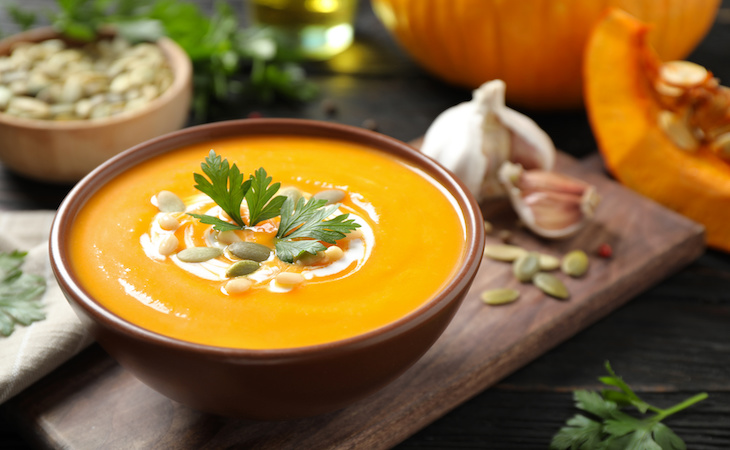
1. Butternut squash soup
A great, healthy holiday recipe, especially for Thanksgiving, is an easy butternut squash soup. Enjoy a bowl on a cold fall or winter night or whip up a big batch for your entire holiday table. This recipe also pairs well with a handcrafted salad or roasted vegetables.
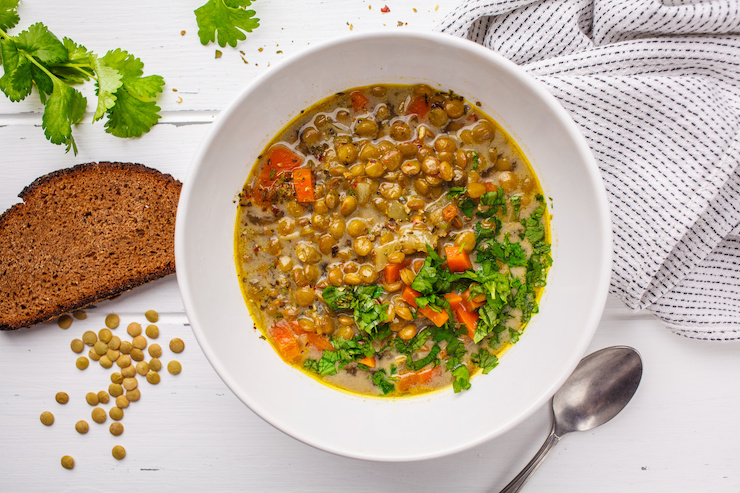
2. Carrot and lentil soup
Whether you’re looking for healthy holiday recipes for Thanksgiving, Christmas, Hanukkah, or New Year’s Eve, soup is the perfect vessel for veggies, whole grains, and legumes, says Gaw.
“My favorite comfort food during the holidays is carrot and lentil soup, which pairs well with leftover cornbread from Thanksgiving,” she says.
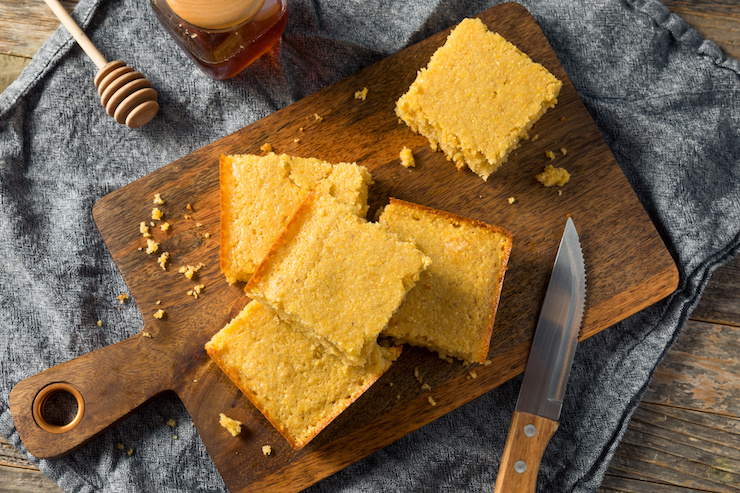
3. Cornbread
Cornbread is a staple at many holiday tables, but if you want to transform it into a healthy holiday recipe, Gaw has some suggestions.
“Make your cornbread a bit healthier by using vegetable oil instead of butter, half the sugar of traditional recipes, and low-fat or non-fat milk,” she says. “If your recipe calls for buttermilk, you can make it yourself by adding one tablespoon of vinegar or lemon juice to one cup of low or nonfat milk.”
Unsweetened soy milk works great too, she adds.
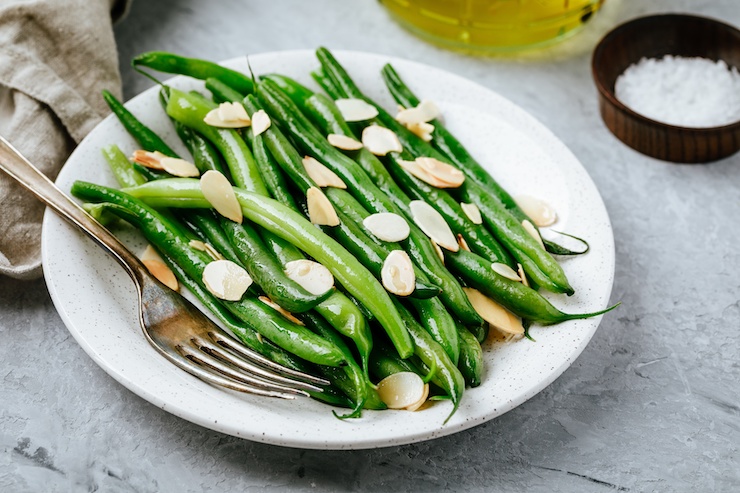
4. Green bean almondine
Instead of a classic green bean casserole, Gaw recommends making a healthy holiday recipe like green bean almondine.
“This is a lighter green bean dish that is made with steamed or blanched green beans, lightly seasoned, and sautéed with sliced almonds,” she says.
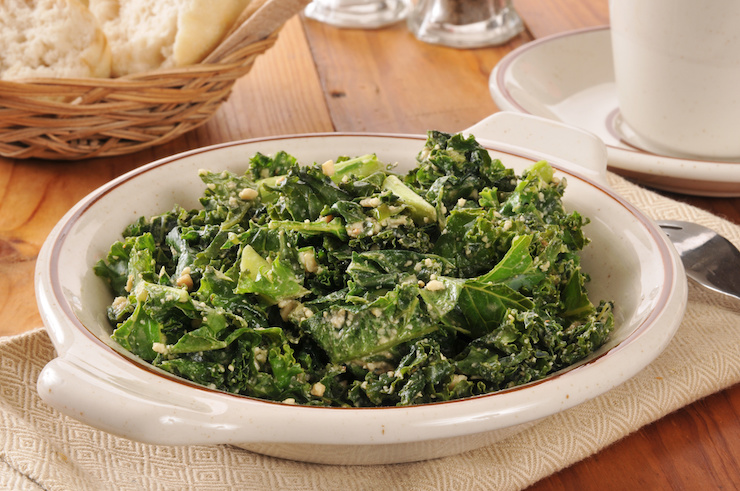
5. Kale salad
Kale is a hearty fall produce option and makes for a great fall salad. Therefore, another healthy holiday recipe idea is a kale salad. The best kale salad, actually. Pair this with a bowl of butternut squash soup or enjoy all on its own.
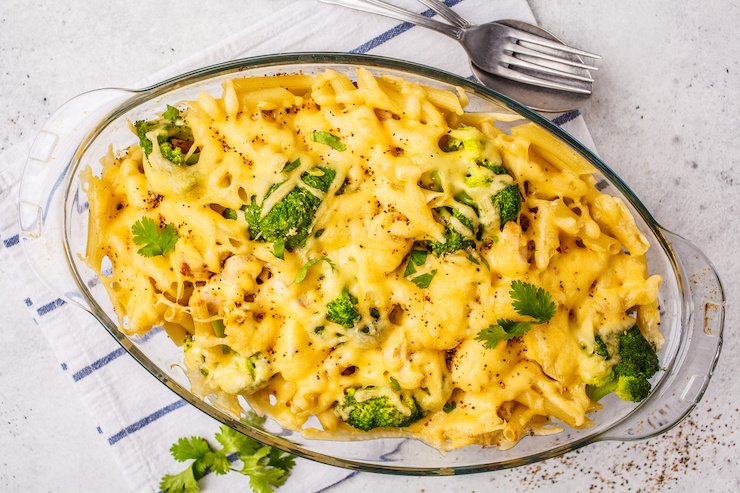
6. Mac and cheese
“Mac and cheese is a holiday favorite, but it is often loaded with sodium and saturated fats,” says Yaa Boakye, RDN, dietitian and certified personal trainer. “With just a few easy tweaks, you can keep it creamy and satisfying without overloading on unhealthy fats.”
First, Boakye says to swap regular pasta for whole wheat pasta. “This adds fiber, which helps keep your heart and digestive system healthy,” she explains. “If whole wheat pasta is not your thing, try a blend of regular and whole wheat pasta for a balanced approach.”
Next, go lighter on the cheese. “Use half the amount of cheese and opt for lower-fat options like part-skim mozzarella or sharp cheddar, which is more flavorful, so you can use less,” says Boakye.
Finally, add veggies. “Stir in finely chopped steamed broccoli or spinach for extra fiber and nutrients,” she says. “These veggies blend well and do not overwhelm the dish.”
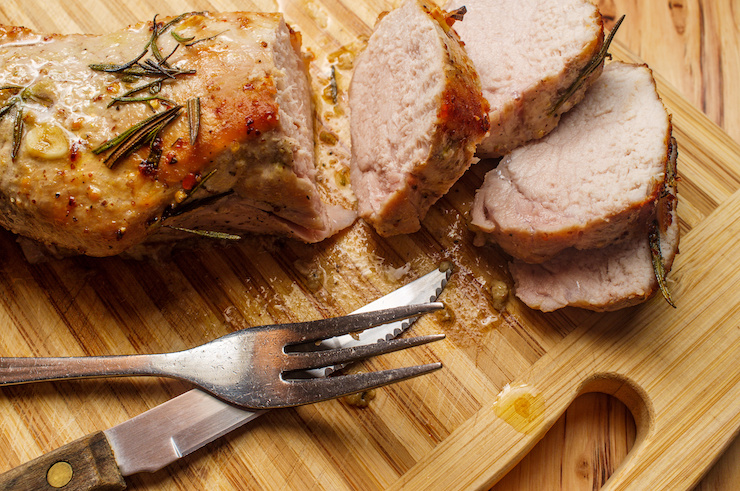
7. Pork tenderloin
Pork tenderloin is naturally lean and makes for a great holiday main dish, notes Boakye. “The key is to keep it simple and flavorful without adding excess salt or sugary glazes,” she says.
Instead of using heavy sauces or salty rubs, Boakye recommends marinating the tenderloin in olive oil, garlic, rosemary, and lemon juice. “This keeps the meat moist and adds a lot of flavor without needing to rely on salt,” she says.
When it comes to cooking, “Roasting the tenderloin at high heat helps lock in the juices, making it tender without needing butter or heavy fats,” adds Boakye.
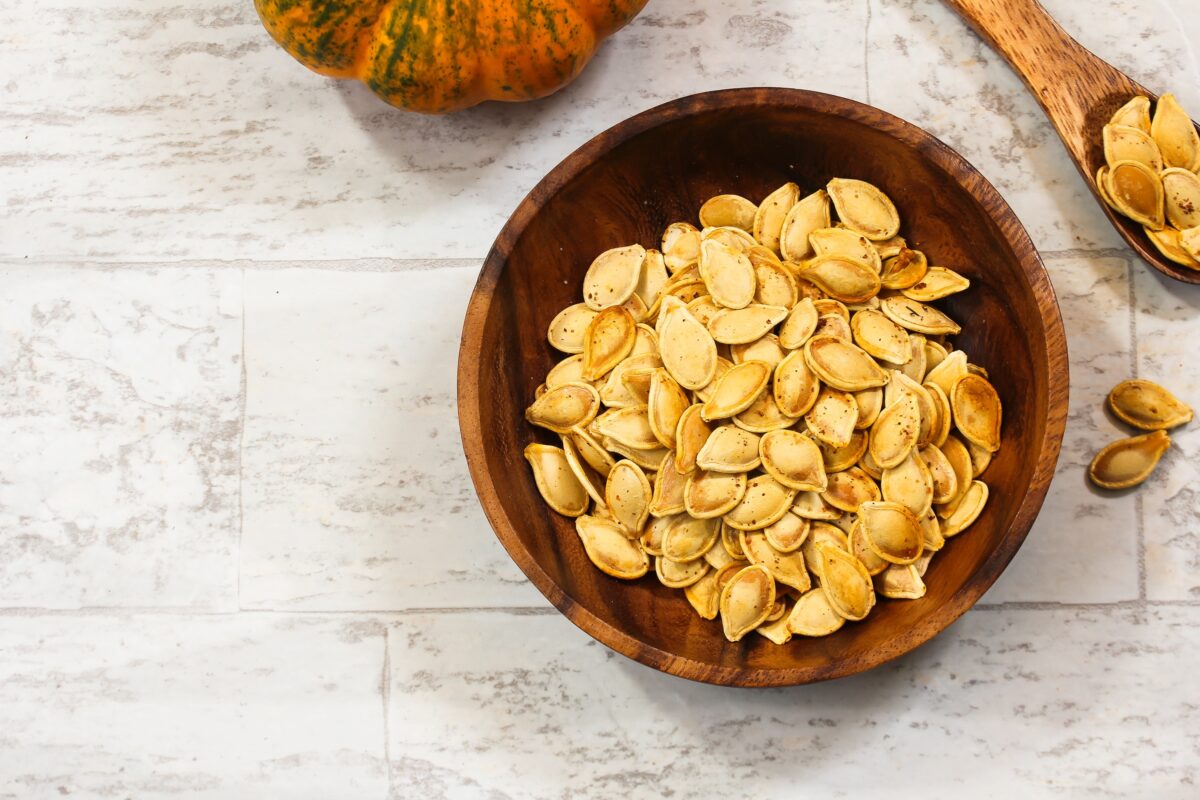
8. Roasted pumpkin seeds
If you enjoy a savory yet sweet holiday recipe, try a tray of sweet roasted pumpkin seeds. These are a great holiday snack for guests. They also make a delicious option for a crunchy holiday salad topper. The best part? They only take 15 minutes to make.
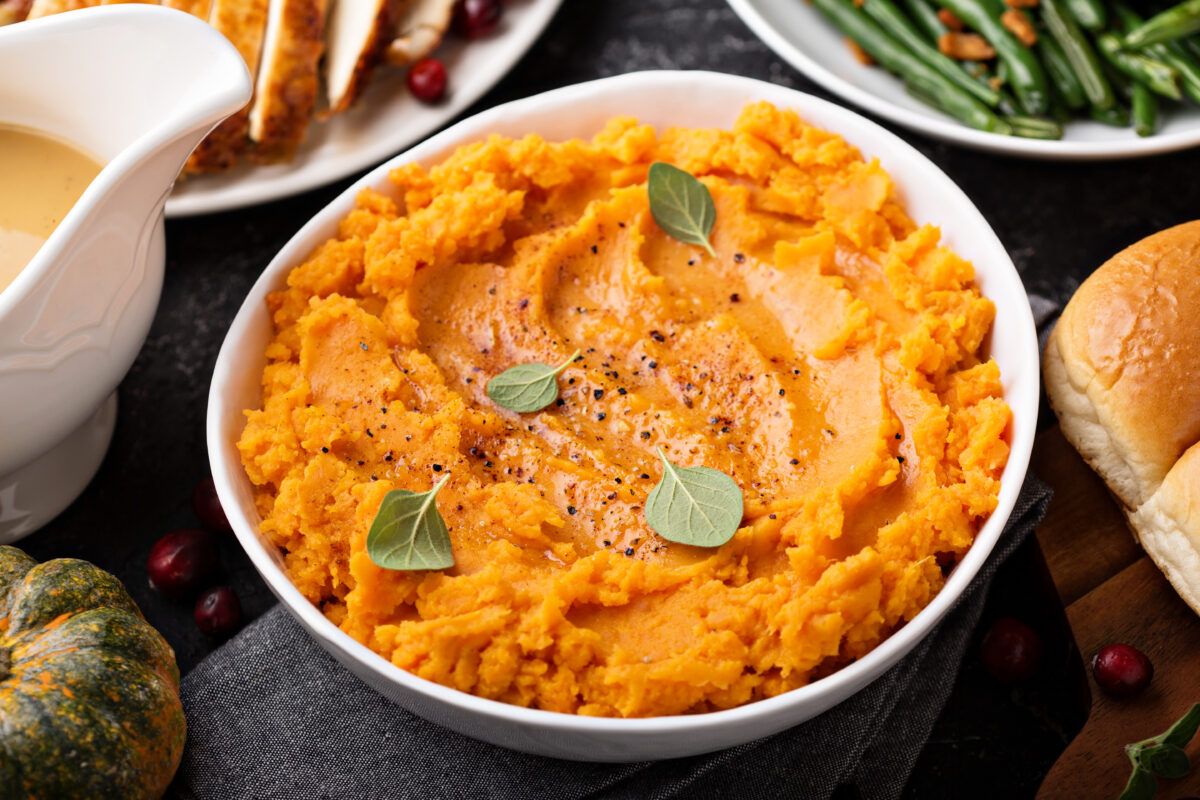
9. Sweet potato casserole
If you’re determined to make that sweet potato casserole, skip the butter and marshmallows.
“If you really enjoy a hint of added sweetness, drizzle a small amount of maple syrup or honey (and go light on it) and sprinkle with toasted pecans for a bit of crunch and healthy fats,” says Boakye.
For an added layer of depth and flavor, include a dash of cinnamon and nutmeg for some warmth.
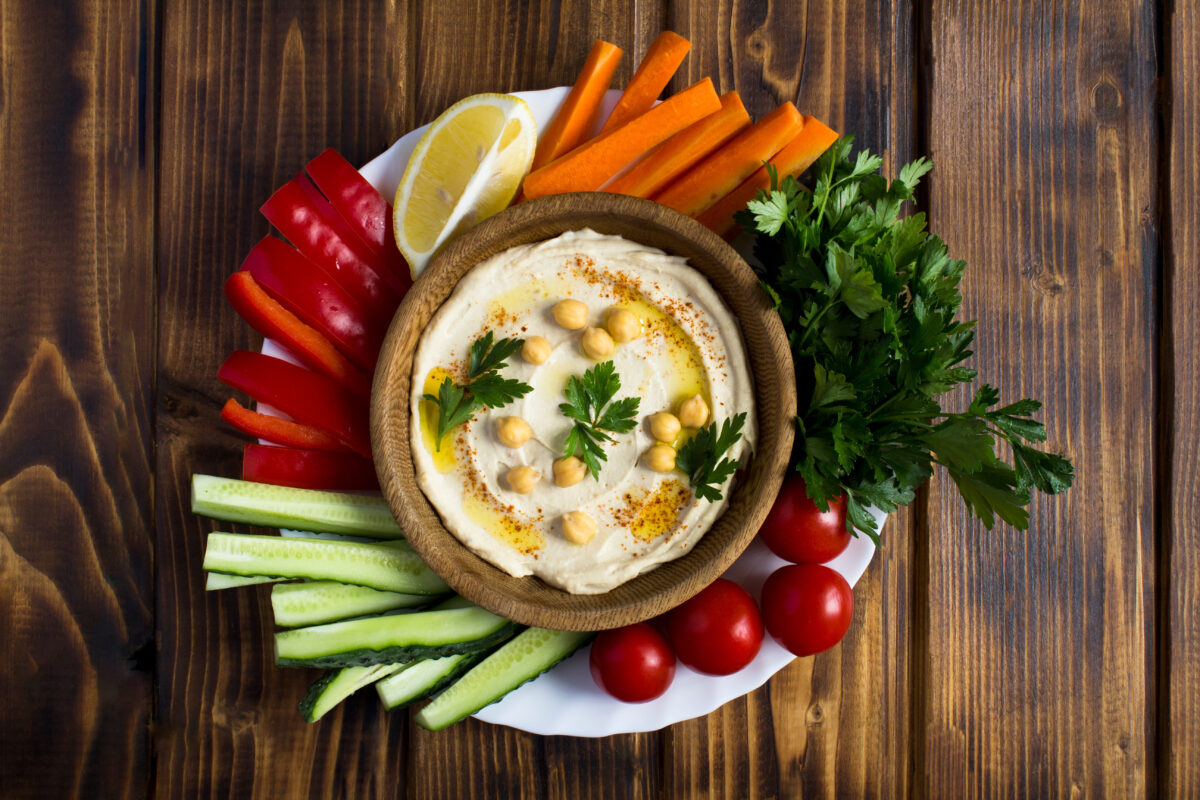
10. Veggie platters with hummus
An easy appetizer perfect for a super simple, healthy holiday recipe is a homemade veggie platter. Skip the overpriced store-bought versions and put one together on your own. “Veggie platters can be a colorful, high fiber, and festive addition to the holiday table,” says Gaw.
Handcrafted dips, like homemade hummus, are the perfect high-fiber addition to accompany your homemade holiday veggie or fruit platter. In case you were wondering, yes, hummus and fruit can be enjoyed together. Many people find the salty and savory flavor of hummus pairs well with sweet fruits like apples, dates, and strawberries.
FAQs
What are some tips for creating healthier versions of traditional holiday recipes?
When creating healthy holiday recipes, stick to a few basic ideas. Reduce added sugar and showcase foods that are already naturally sweet all on their own, like roasted sweet potatoes.
Keep cooked vegetables free of added dairy and sodium, and instead, serve them up in a simple way by sautéing or steaming them.
Serve lean meats like pork tenderloin or roasted turkey, but skip the excess salt and sugary glazes. Finally, include fresh fruit, like a bowl of mixed berries, for dessert.
How can I accommodate guests with dietary restrictions such as gluten-free, vegan, or low-sugar diets during the holidays?
To accommodate guests with dietary restrictions, serve gluten-free options for the bread basket and cook up gluten-free grains like buckwheat, quinoa, and rice.
For vegan guests, make sure there are plenty of plant-based options, and double-check that all of those plant-based recipes do not contain animal products like butter and honey.
For any low-sugar guests, reduce sugar in recipes and leave extra ingredients out, such as brown sugar, marshmallows, and molasses. Include fresh fruit trays for appetizers or dessert.
How can I maintain a balanced diet while enjoying holiday meals and treats?
To maintain a balanced diet while enjoying holiday meals and treats, make sure you get plenty of sleep.
“When you do not get enough sleep, your body produces more ghrelin, the hormone that stimulates appetite, and less leptin, the hormone that signals fullness,” explains Boakye. “This hormonal imbalance can lead to increased hunger and overeating, particularly of high-calorie foods.”
Next, learn more about how nutrition affects sleep quality and the best foods to eat for well-rounded sleep.
Ashley Martens
Ashley Martens is a wellness writer based in Chicago. With a digital marketing background and her knowledge of general nutrition and a lifelong passion for all things health and wellness, Ashley covers topics that can help people live happier and healthier lives.
